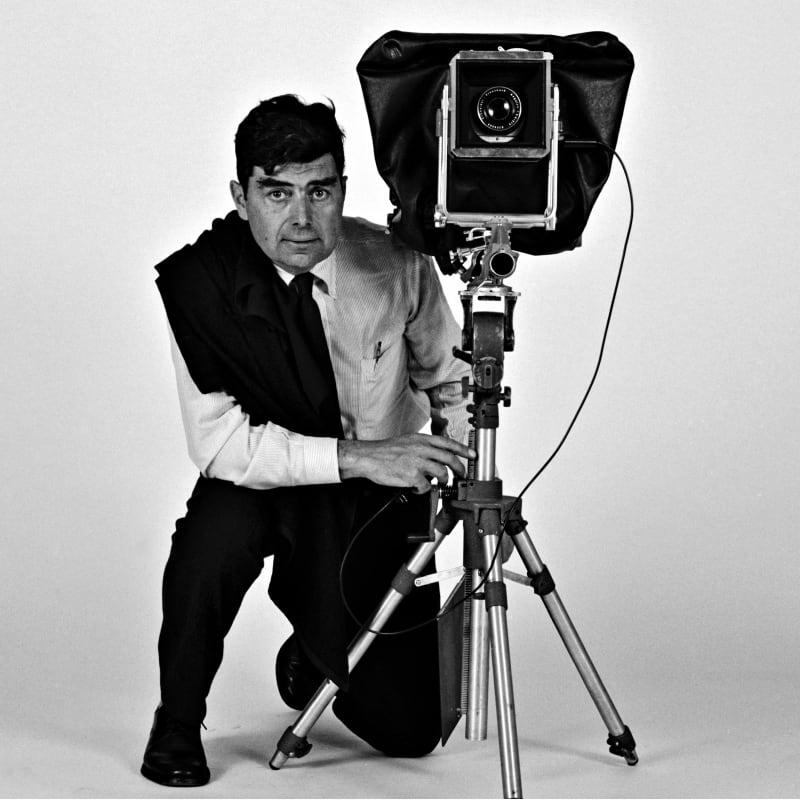Many years after his passing, Ezra Stoller (1915-2004; American) remains one of the most celebrated architectural photographers of the twentieth century. The artist’s concise and descriptive photographs defined perceptions of post-War Modern architecture, providing viewers with visual footholds to explore these new structures. During his career as an architectural photographer from the late 1930s to the 1970s, Stoller worked closely with Frank Lloyd Wright, in addition to many other leading architects of the period, such as Paul Rudolph, Eero Saarinen, I.M. Pei, Marcel Breuer, and Gordon Bunshaft of Skidmore, Owings & Merrill. The artist’s connection to Frank Lloyd Wright began in 1945 with the photographs of the architect’s Taliesin in Spring Green, Wisconsin and Taliesin West in Scottsdale, Arizona. These were widely published and shown at the Museum of Modern Art in 1947 in a two-person exhibition for the photographer and architect.
Often alongside the architects themselves, Stoller would find the most telling view of the buildings he photographed, and would pay great attention to the time of day to find the perfect play of light on his subjects. The artist’s entire archive of Wright’s buildings reflects his keen Modernist sensibility as well as his careful attention to vantage point, lighting conditions, line, color, and texture. Stoller documented these cultural treasures the way Wright and other architects envisioned and preferred them to be seen, experienced, and remembered. Throughout his oeuvre, the artist maintained an impressive and meticulous precision, crafting compositions as though they were paintings. Stoller aimed to understand these buildings and explain them, illuminating their truths and the meanings instilled within by the architects themselves.
At the time, many of Stoller’s photographs would be published in magazines as cropped views, often leaving out features for which his work is prized today. The artist was distinctive for allowing more information into the frame than just the buildings themselves— cars, railings, and even construction materials would provide a grounding element to the image, helping the viewer to ground themselves where the camera stood in relation to the structure on display. In this way, Stoller became a bridge between the Modernist architectural avant-garde and the public, allowing global audiences a view into these buildings, both literally through the two-dimensional images themselves, and figuratively, by showing off a way of seeing these structures that brought them to life, making them intense, exciting, and beautiful.
Ezra Stoller’s photographs have been exhibited internationally and are in numerous museum collections including the Museum of Modern Art, New York; Whitney Museum of American Art, New York; Museum of Fine Arts, Houston; High Museum of Art, Atlanta; Canadian Centre for Architecture, Montreal; and the San Francisco Museum of Modern Art. Stoller was born in Chicago in 1915 and graduated from New York University in 1938 with a degree in Industrial Design.
